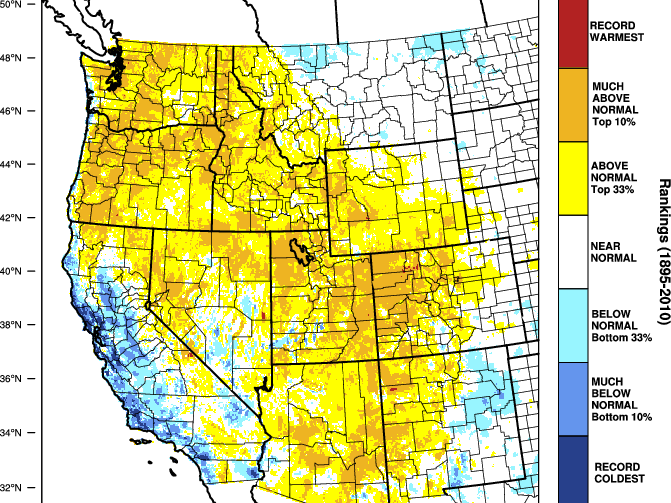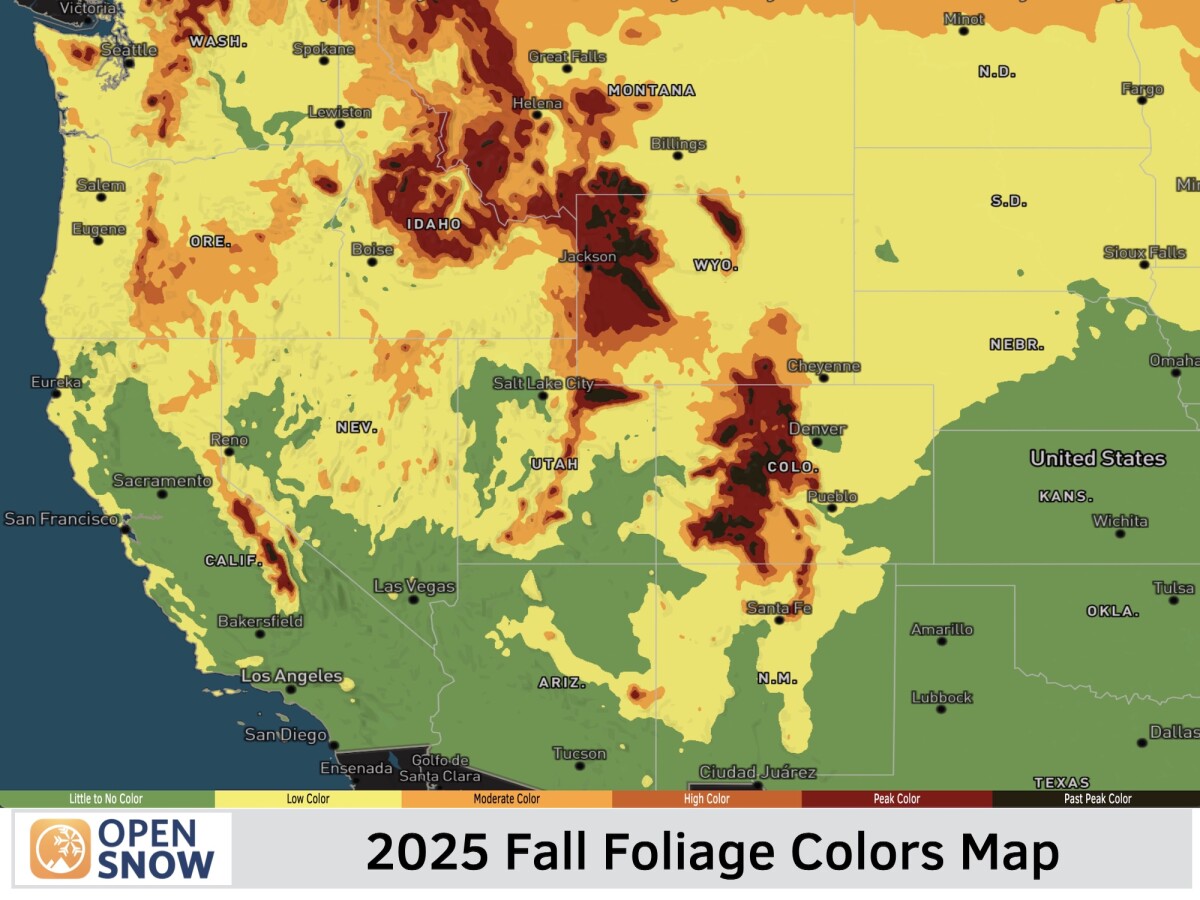News

By Sam Collentine, Meteorologist Posted 5 years ago July 20, 2020
OpenSnow Commits 1% of Subscription Sales to Carbon Removal Technologies

In 2019, we learned how to calculate our carbon footprint and offset this impact.
We are now going a step further to help mitigate the threat of climate change by committing 1% of our subscription sales to the direct removal of carbon dioxide from the atmosphere and its sequestration in secure, long-term storage.
This is being done in partnership with our subscription payment processor, Stripe. In 2019, Stripe announced its Negative Emissions Commitment, pledging at least $1M per year to pay, at any price, for the direct removal of carbon dioxide from the atmosphere and its sequestration in secure, long-term storage. They’ve since built a small team to focus on creating a market for carbon removal by being an early customer for promising negative emissions technologies.
Our investment, along with the help of many other companies, will lower the long-term price for the direct removal of carbon dioxide from its current price of $75-775 per metric ton of carbon. For perspective, our 2018 carbon offset purchase was $8.79 per metric ton of carbon.
Below, we'll first run through Stripe's negative emissions criteria and their initial project list. We'll then hope to answer all of your questions in the Climate Change FAQ section.
Negative Emissions Target Criteria
Stripe has developed a set of project criteria that characterize the kinds of solutions needed to help round out the existing gaps in the negative emissions portfolio. We are excited to support projects that have the potential to achieve these criteria by 2040, even if they don’t yet achieve them today.

We hope that this approach will accelerate technological developments to remove and store carbon at the required scale, cost, and quality level.
Project #1: Climeworks | Capture + Storage

Climeworks uses renewable geothermal energy and waste heat to capture CO2 directly from the air, concentrate it, and permanently sequester it underground in basaltic rock formations with Carbfix. While it’s early in scaling, the capacity of this approach is theoretically nearly limitless. It’s also permanent and straightforward to measure. Climeworks has an ambitious cost and volume curve, with a long-term price target of $100-200 per ton. Though this technology is expensive today, we’re optimistic it will decrease in cost quickly with more early purchasers.
Project #2: Project Vesta | Capture + Storage

Project Vesta captures CO2 by using an abundant, naturally occurring mineral called olivine. Ocean waves grind down the olivine, increasing its surface area. As the olivine breaks down, it captures atmospheric CO2 from within the ocean and stabilizes it as limestone on the seafloor. This is a compelling approach because it provides permanent sequestration with the potential for very high volume at a low cost. Questions remain about safety and viability: to validate coastal enhanced weathering, more lab experiments, and pilot beach projects must be performed.
Project #3: CarbonCure | Storage Only

CarbonCure’s technology sequesters CO2 in concrete by mineralizing it into calcium carbonate (CaCO3)—as a bonus, this has the side effect of actually strengthening the concrete. This solution is compelling because it’s permanent, relatively low cost, and could scale to the size of the global concrete market, sequestering >0.5 gigatons of CO2 annually. Today, CarbonCure captures most of its CO2 from industrial emitters such as ethanol, fertilizer, or cement plants. In the future, CarbonCure’s technology could use CO2 from direct air capture technologies once they become more readily available and economical, forming a full negative emissions technology.
Project #4: Charm Industrial | Storage Only

Charm Industrial has created a novel process for preparing and injecting bio-oil into geologic storage. Bio-oil is produced from biomass and maintains much of the carbon that was captured naturally by the plants. By injecting it into secure geologic storage, they’re making the carbon storage permanent.
Climate Change FAQ
Below, we hope that we've addressed any questions that you can think of. If we haven't covered something that's on your mind, feel free to drop us a note at [email protected].
This is great, but shouldn't OpenSnow be doing more about climate change?
We are expert snow and mountain weather forecasters and not experts in climate science or public policy, so we are continuing to learn and invest. In 2019, we learned how to calculate our carbon footprint and offset this impact. We are now going a step further by committing 1% of our subscription sales to the direct removal of carbon dioxide from the atmosphere and its sequestration in secure, long-term storage.
I don't believe that climate change is a big deal.
Even though nearly all scientists agree that humans are having a significant impact on our atmosphere and our planet (sources below), let's assume they are wrong and you are right. In this case, there is still no downside to us investing in carbon-removal technologies to help mitigate the risks for future generations.
Why are you getting involved with a politically motivated and sensitive subject like climate change?
Our primary goal is to provide the best snow and mountain weather forecasts, and we also enjoy explaining earth science in a relatable way. Paying attention to the human impacts on our climate is a scientific topic and not one that should be politically motivated or sensitive. Based on current scientific research, it makes sense to us that human-caused carbon emissions are impacting the climate, and we have chosen to directly invest in removing those emissions.
Are human-caused carbon emissions really impacting our planet?
The evidence is becoming increasingly clear that carbon emissions from human activities are having a significant impact on the health and climate of our planet.
Source → AMS 2018 State of the Climate
Source → IPCC Summary for Policy Makers
Are humans causing the recorded warming temperatures?
Carbon dioxide, methane, and other gases in our atmosphere absorb and radiate heat back toward Earth. Human activities, like burning coal, oil, and natural gas, have increased the amount of carbon dioxide and other greenhouse gases, and these gases are the likely causes for the majority of the warming in BOTH the Earth's atmosphere and the Earth's oceans.
Source → How Carbon Dioxide impacts Temperature
Source → What is Warming the World (easy-to-understand graphs)
Source → Compare Factors that Influence Earth's Temperature
Is the science of climate change "settled"?
Science is never settled because new hypotheses should always be developed and tested. And because science is never 100% settled, we also should not wait for perfect agreement before discussing and implementing alternatives to solve a problem.
Source → Paper by Seinfeld et al 2016
How will climate change impact snow and the ski industry?
Climate change's primary threat to snow is warming temperatures, and this will mean less snow (and more rain) at lower elevations, during the shoulder seasons of spring and fall, and likely later starts and earlier ends to the ski resort season.
Below is a quick summary of our understanding of this issue:
- There is currently NO long-term trend in the amount of precipitation in the United States.
- There is currently NO long-term trend in the western US snowpack for higher elevation areas (higher than 10,000 feet).
- There IS a declining trend in the western US snowpack for lower elevation areas (lower than 10,000 feet).
- It is possible that future weather patterns could change, bringing more or less snow and precipitation to certain regions, but confidence in the details of potential future changes to weather patterns is very, very low.
Source → Declining Western U.S. Snowpack (science paper)
Source → Climate Change in Colorado (summary PDF)
Source → Climate Change and Variability (video of Dr. Jim Steenburgh)
Other than warming temperatures, what other impacts are being observed?
Oceans have become more acidic due to the increased absorption of carbon dioxide, many of the Earth’s glaciers and ice sheets are melting, and this leads to sea levels rising at an increasing rate. Sea levels not only rise due to melting glaciers and ice sheets but also due to water expanding as it warms.
Source → The Carbon Cycle
Source → World of Change: Arctic Sea Ice
Source → World of Change: Ice Loss in Glacier National Park
Source → Thermal Expansion and Sea Level Rise
Is OpenSnow doing anything else to support the outdoor community?
In addition to committing 1% of our subscription sales to the direct removal of carbon dioxide from the atmosphere and its sequestration in secure, long-term storage, we are also thinking about how to implement a broader program to support more environmental and scientific research.
Have Questions?
Send an email to [email protected] and we'll respond as quickly as possible.
Sam Collentine
About The Author




